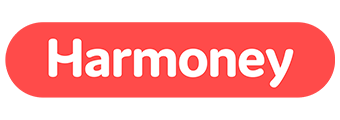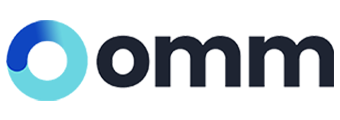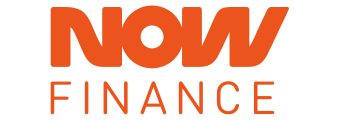Traditional lending requirements can leave self-employed borrowers and small business owners locked out of access to personal finance. The low-doc personal loan is an alternative solution that offers a more flexible approval process, relying on minimal documentation to assess creditworthiness.
What is a low-doc personal loan?
The low-documentation or low-doc personal loan is a financial product designed to cater to those who may not have the full suite of standard documentation that banks typically require.
It offers a more streamlined application process that allows borrowers to submit alternative evidence such as bank statements, business activity statements (BAS), or a signed income declaration.
-
Many mainstream lenders require you to be a PAYG employee or have two years' worth of Business Activity Statements (BAS) under your belt. If you aren't either of these, you might want to look at a low-doc loan.
Originally developed for Australians whose income might fluctuate month to month or who operate outside traditional employment structures, they've now become a broader tool for borrowers in various circumstances who find it challenging to meet the documentation criteria of mainstream lenders.
Who can apply for a low-doc personal loan?
While the self-employed make up a significant portion of low-doc personal loan applicants, eligibility extends far beyond certain job types.
The defining feature of a low-doc loan is its flexibility in documentation, not the occupation of the borrower. This opens the door for a broader range of individuals who may not meet traditional lending criteria but still have a stable income and strong financial footing.
Freelancers and contractors
Whether working in creative industries, IT, consulting, or the trades, freelancers and independent contractors often experience income that fluctuates month to month. Without fixed employment contracts or regular payslips, they may struggle to meet the documentation requirements of standard loans.
Gig economy workers
From rideshare drivers and food delivery couriers to online marketplace sellers, gig economy workers represent a fast-growing segment of the modern workforce. Despite often having consistent earnings, their income is typically classified as irregular or non-traditional by major lenders.
Small business owners
Small business owners may reinvest most of their income into the business, making their personal cash flow appear limited on paper. Moreover, many choose to minimise taxable income for strategic reasons, which can impact their ability to qualify for conventional loans.
Low-doc lending gives these individuals the opportunity to access credit based on their business activity statements (BAS), bank statements, or profit and loss summaries, rather than strict tax returns.
Alternative incomes and work history
Other employed individuals, like people returning to the workforce after a break, or those with patchy employment records, might find it easier to qualify through a low-doc route. Likewise, individuals with international income or multiple side hustles may find this type of loan more accommodating than mainstream alternatives.
What can I use a low-doc personal loan for?
These loans can also appeal to borrowers recovering from financial setbacks or those with limited credit history. Some common uses for low doc personal loans include:
-
Covering unexpected medical bills
-
Funding home renovations
-
Consolidating debt
-
Purchasing vehicles or equipment
-
Supporting cash flow for small businesses
What documents are typically required for a low-doc personal loan?
Before applying for a personal loan, it's important to have all necessary documents prepared to speed up your application. Typically, you'll need:
-
Proof of identity, such as a passport or driver's license
-
Proof of income, e.g. recent payslips or tax returns
-
Employment verification through an employer letter or recent payslips, and up to 2 years of BAS for the self-employed
-
Proof of residency, e.g. utility bills or mortgage statements
-
Bank statements showing your financial commitments, assets, etc.
-
Details of other debts
Read more: How to get your personal loan approved
Can I get a competitive rate on a low-doc loan?
While low doc loans start with higher baseline rates due to risk, you can still secure a competitive deal if:
-
You have a strong credit score
-
You can offer collateral (like a car or property)
-
You provide comprehensive bank statements showing consistent income
-
Your business has been operating successfully for several years
-
You borrow from a specialist lender familiar with self-employed applicants
How do interest rates compare on low-doc personal loans?
Find the right personal loan tailored to your financial profile by comparing lenders based on interest rates, fees, loan terms, and more.
| Lender | Car Loan | Interest Rate | Comparison Rate* | Monthly Repayment | Interest Type | Secured Type | Early Exit Fee | Ongoing Fee | Upfront Fee | Total Repayment | Early Repayment | Instant Approval | Online Application | Tags | Features | Link | Compare | Promoted Product | Disclosure |
|---|---|---|---|---|---|---|---|---|---|---|---|---|---|---|---|---|---|---|---|
5.76% p.a. | 5.76% p.a. | $384 | Fixed | Unsecured | $0 | $0 | $275 | $23,066 |
| Promoted | Disclosure | ||||||||
6.28% p.a. | 6.28% p.a. | $389 | Fixed | Unsecured | $0 | $0 | $0 | $23,356 |
| Promoted | Disclosure | ||||||||
5.95% p.a. | 5.95% p.a. | $386 | Fixed | Unsecured | $0 | $0 | $0 | $23,171 |
| Promoted | Disclosure |
Are low-doc personal loans riskier?
Low-doc personal loans can carry greater risks for the borrower, primarily due to the loan's structure and the higher costs involved.
When traditional documentation like payslips or detailed tax returns is missing, lenders have less concrete evidence to assess whether a borrower can reliably meet repayments. They often compensate by charging higher interest rates and stricter fees, which can make repayments more expensive and challenging to manage.
Here are the main reasons why low doc loans can be riskier from a borrower's perspective:
-
Higher interest rates, which can significantly increase total repayment amounts
-
Stricter penalties for missed or late payments
-
Additional fees that may be buried in the fine print
-
Overborrowing, especially if you're relying on projected future income
If the loan is secured, you also run the risk of losing the asset used as collateral if you default on repayments.
That said, these loans are not inherently unsafe. For many self-employed or non-traditional earners, they offer a vital pathway to finance, as long as they are approached with caution and a clear repayment plan.



